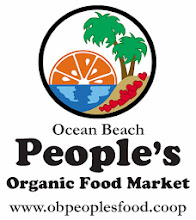
10 simple steps we all can take to help make this season less wasteful and more plentiful
The holiday season is a time for gifts, decorations, and lots and lots of food. As a result, it's also a time of spectacular amounts of waste. In the United States, we generate an extra 5 million tons of household waste each year between Thanksgiving and New Year's, including three times as much food waste as at other times of the year. When our total food waste adds up to 34 million tons each year, that equals a lot of food. With the holidays now upon us, the Worldwatch Institute offers 10 simple steps we all can take to help make this season less wasteful and more plentiful.
According to the United Nations Food and Agriculture Organization, roughly one-third of all food produced for human consumption----approximately 1.3 billion tons----is lost or wasted each year. Consumers in developed countries such as the United States are responsible for 222 million tons of this waste, or nearly the same quantity of food as is produced in all of sub-Saharan Africa.
As Americans prepare for the upcoming Thanksgiving holiday, here are 10 tips to help reduce the amount of food we waste:
Before the meal: Plan your menu and exactly how much food you'll need.
1. Be realistic: The fear of not providing enough to eat often causes hosts to cook too much. Instead, plan out how much food you and your guests will realistically need, and stock up accordingly. The Love Food Hate Waste organization, which focuses on sharing convenient tips for reducing food waste, provides a handy "Perfect portions" planner to calculate meal sizes for parties as well as everyday meals.
2. Plan ahead: Create a shopping list before heading to the Co-op. Sticking to this list will reduce the risk of impulse buys or buying unnecessary quantities. During the meal: Control the amount on your plate to reduce the amount in the garbage.
3. Go small: The season of indulgence often promotes plates piled high with more food than can be eaten. Simple tricks of using smaller serving utensils or plates can encourage smaller portions, reducing the amount left on plates. Guests can always take second (or third!) servings if still hungry, and it is much easier to use leftovers from serving platters for future meals.
4. Encourage self-serve: Allow guests to serve themselves, choosing what, and how much, they would like to eat. This helps to make meals feel more familiar and also reduces the amount of unwanted food left on guests' plates.
5. Store leftovers safely: Properly storing our leftovers will preserve them safely for future meals. The U.S. Department of Agriculture recommends that hot foods be left out for no more than two hours. Store leftovers in smaller, individually sized containers, making them more convenient to grab for a quick meal rather than being passed over and eventually wasted.
6. Compost food scraps: Instead of throwing out the vegetable peels, eggshells, and other food scraps from making your meal, consider composting them. Individual composting systems can be relatively easy and inexpensive, and provide quality inputs for garden soils. In 2010, San Francisco became the first U.S. city to pass legislation encouraging city-wide composting, and similar broader-scale food composting approaches have been spreading since.
7. Create new meals: If composting is not an option for you, look for creative recipes to see if your food scraps can be used for new meals. Vegetable scraps can be easily boiled down for stock and soups, and bread crusts and ends can be used to make tasty homemade croutons.
8. Donate excess: Food banks and shelters gladly welcome donations of canned and dried foods, especially during the holiday season and colder months. At People’s, there is a food drive box that you can donate to, and we have it set up ready for donations year ‘round.
9. Support food-recovery programs: In some cases, food-recovery systems will come to you to collect your excess. In New York City, City Harvest, the world's first food-rescue organization, collects approximately 28 million pounds of food each year that would otherwise go to waste, providing groceries and meals for over 300,000 people.
10. Give gifts with thought: When giving food as a gift, avoid highly perishable items and make an effort to select foods that you know the recipient will enjoy rather than waste. The Rainforest Alliance, an international nonprofit, works with farmers and producers in tropical areas to ensure they are practicing environmentally sustainable and socially just methods. The group's certified chocolates, coffee, and teas are great gifts that have with long shelf-lives, and buying them helps support businesses and individuals across the world.
As we sit down this week to give thanks for the people and things around us, we must also recognize those who may not be so fortunate. The food wasted in the United States each year is enough to satisfy the hunger of the approximately 1 billion malnourished people worldwide, according to Tristram Stuart, a food waste expert and contributing author to “State of the World 2011”. As we prepare for upcoming holiday celebrations, the simple changes we make, such as using food responsibly and donating excess to the hungry, can help make the holiday season more plentiful and hunger-free for all.



